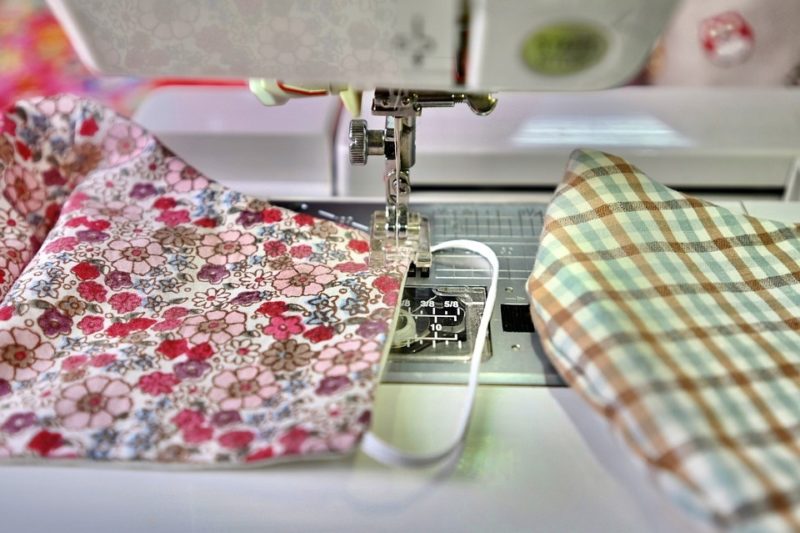If you want to know how to reverse stitch on a Singer sewing machine, consider two steps. First, we’ll discuss where to find the button for this feature and how to sew backward. You’ll also know more about reverse stitching for a complete overall guide.
But what if you’re experiencing issues with reverse features? Please find out how to fix the reverse button on a sewing machine with our repair tutorial.

How To Reverse Stitch On A Singer Sewing Machine Correctly
- Refer to the Singer manual of the specific machine you have
- Please find the button with the U-shaped arrow, typically at the front of the sewing machine, or check your manual for where it’s located
- Press the reverse stitch button and start sewing
Step 2. Start sewing
- Hold the material as the sewing machine sews backward and stop it manually by taking your foot off the pedal
- Deactivate the reverse stitch function by pressing the button again
- Be careful not to hit the thread plate to avoid bunching
- If you accidentally press the wrong button, turn off the Singer sewing machine and turn it on again to reset
When Reverse Stitching Do You Need To Hold The Reverse Button In?
You typically don’t have to hold the reverse button when reverse stitching on a sewing machine. For example, in most Singer sewing machines, the manual only indicates to press the reverse button once, and you can start stitching. Then, press it again to deactivate the reverse stitch function.
However, you should still read the specific instructions of your sewing machine to be sure.
What Is A Reverse Stitch Control?
The reverse stitch control is a feature found in most sewing machines. It is activated by pressing the button, and the machine should backstitch for you. Having a reverse stitch control on the sewing machine makes backstitching convenient and easy to secure your fabric or seam.
Once you finished sewing the seam, you only need to press the reverse stitch button and reinforce the stitches to make them more durable. Just remember to leave the presser foot and needle down to prevent fabric bunching up, then change the fabric position to begin. And as for the reverse stitching mechanism on the sewing machine, refer to the illustrations in the manual or check the middle of the face place, above the needle, or left-hand side of the front of the machine.
How Do You Reverse Stitch On A Sewing Machine Without Reverse Button?
- Double thread a needle
- Mark the seam of where you want to stitch
- Start sewing by having the needle back through the fabric layers in front of the previous stitch
- Move the needle back through the material between where the needle came in and out
- Continue working the stitches and check if the threads are overlapping on the fabric’s reverse side
Why Is My Singer Sewing Machine Sewing In Reverse?
- Check the backstitch lever if it’s broken or if the spring that controls it is worn down
- Make sure the sewing machine has no thread, lint, or dust build-up that jammed the backstitch lever
- The feed dogs can get stuck in the reverse stitch setting if it is jammed with lint, dust, or thread
- Computerized sewing machines may need their software to be reset
- The machine is set to buttonhole stitch instead of straight or zigzag stitch
Learn how to repair a sewing machine at home for more troubleshooting techniques.
What Is Reverse Stitch Called?
A reverse stitch is also called a backstitch. It is a technique of sewing back and forth at the beginning and end of the seam to reinforce the stitches. You can do it with the reverse stitch button of the sewing machine or sew by hand.
Backstitching vs lockstitching
Another technique that might be confused with backstitching is lockstitching. However, this technique is more suitable when sewing lightweight materials to prevent ruining the fabric’s structure and cause bulking. Sewing machines also have a lockstitch feature, but you can do it yourself by shortening the stitch and making four stitches at the same location.
Is Reverse Stitching Necessary?
There are cases where reverse stitching is unnecessary. For example, it’s better to leave long tails and tie the threads themselves when working on delicate fabrics to avoid bulking or having thread show on your stitch line when quilting or doing appliques. However, remember that backstitching is essential, especially to seams to keep the stitches from getting pulled out over time.
Why Is My Reverse Stitch Not Working?
If your sewing machine won’t reverse stitch, you need to check the reverse button mechanism. The spring might need to be reattached or replaced. If the reverse button is stuck, you only need to open the sewing machine head, check the assembly, and put the dislodged spring back in place.
If the spring for the mechanism is rusty or worn down, it would also be best to replace it. And finally, you may need to oil the machine’s moving components and clear them from dust and debris. Be sure to consult the manual and bring the machine to an authorized retailer for annual servicing.
Conclusion
And that’s it! To recap how to reverse stitch on a Singer sewing machine, you only need to activate the button then press it again to return to normal stitching. However, you can also backstitch by hand as it’s as simple as going back and forth at the beginning and end of the seam.
We hope this was a helpful read. Leave us a comment if you have any.
